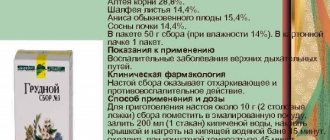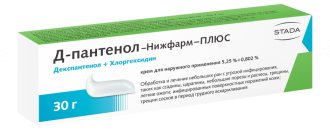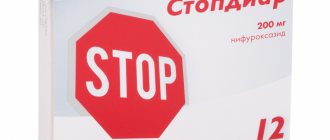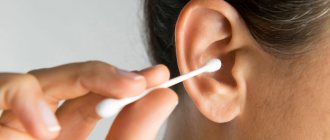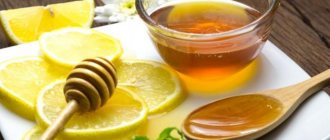Instructions for use of Breast Collection 4 (Method and dosage)
Pour 2 tablespoons of the product into an enamel bowl, then pour in 200 ml of boiling water and heat in a water bath for 15 minutes. The resulting solution is infused for 45 minutes at normal temperature, filtered, and the remaining contents are squeezed out. The amount of the resulting infusion is increased to 200 ml with clean water and consumed hot, 70 ml three times a day for 15-20 days. The prepared infusion is shaken before use.
One filter package of the product is placed in an enamel or glass container and filled with 200 ml of boiling water, then covered and left for a quarter of an hour. Drink half a glass up to three times a day for 15-20 days.
Collection option No. 4
Chest collection No. 4 is intended for coughs of various forms: wet and dry. It is made from plants that are natural anti-inflammatory and expectorant agents. Below is the composition of this breast collection:
- Chamomile. Its dried leaves relieve irritation and have a calming effect on the irritated oral cavity;
- Swamp wild rosemary. Prevents the spread of pathogenic bacteria in the throat and mouth;
- Violet petals. Helps eliminate frequently recurring coughing attacks and has a sedative effect;
- Peppermint. Stabilizes the patient’s respiratory system;
- Calendula. Promotes the formation of sputum and improves expectoration during wet coughs.
The main difference between this drug is its expanded composition: for its production, the maximum number of plants is used, which help to heal as quickly as possible. Contraindications to breast collection No. 4 – allergy to the herbs that are contained therein. The use of breast milk No. 4 during pregnancy is permitted under medical supervision.
When to use
Chest fees No. 4 are prescribed for the treatment of bronchitis, laryngitis, severe coughing attacks and diseases of the bronchi (for example, bronchitis). Often breastfeeding number 4 is prescribed to improve the health of a patient with flu and colds. In addition, it is prescribed to relieve runny nose and cough during pregnancy.
How to use
The algorithm for preparing this herbal preparation is practically the same:
- 2 tbsp. herbal mixture should be poured 1 tbsp. boiling water and cover with a lid;
- The liquid must be simmered over low heat for 15 minutes, then removed from the heat;
- The broth should be left for one hour, and when finished, strain through a gauze bandage.
The tincture is taken until complete relief from the disease, twice a day after meals, in half a glass portions. It is better to warm it up before use.
special instructions
How to choose a Breast Feed?
Cough tea is available in numbers 1, 2, 3 and 4.
- Medicine number 1 has mainly anti-inflammatory and expectorant effects and is usually used for laryngitis and tracheitis.
- Medicine number 2 has a strong anti-inflammatory effect and is prescribed mainly for pneumonia or bronchitis.
- Medicine number 3 contains anise fruits, marshmallow and licorice roots, pine buds and sage leaves . The drug is more often used for pneumonia or bronchitis , as it has an expectorant, emollient and anti-inflammatory effect.
- Medicine number 4 is best used for respiratory diseases accompanied by a non-productive cough. The main effects of this drug are anti-inflammatory, expectorant, sedative and anti-inflammatory.
Collection option No. 1
The first complex of medicinal plants to eliminate severe coughing attacks in children and adults. It consists of three basic herbs that are actively used in folk medicine:
- Coltsfoot. Promotes rapid expectoration of mucus. Infusions from it are used mainly to eliminate dry cough;
- Marshmallow root. It helps clear the upper respiratory tract of accumulated mucus and thus speed up the healing process. Marshmallow syrup is often prescribed for wet coughs to eliminate phlegm;
- Oregano. This herb has a calming effect. During a long-term illness, the mucous surfaces of the human oral cavity are inevitably subject to irritation, which in folk medicine is eliminated by oregano tea.
Note! Since oregano herbs, which are in the complex, can cause negative reactions in the body (for example, scabies, uterine bleeding, rash), cough collection No. 1 is prohibited from being used by pregnant girls.
What number of chest collection should I use for a dry cough?
Breast collection No. 1 for dry cough contains coltsfoot and marshmallow root: in folk medicine they are used to form and remove sputum.
It must be taken in the following cases:
- When coughing during ARVI;
- When treating influenza;
- For infectious respiratory diseases.
This herbal complex gives good results when taken in parallel with other medications prescribed by the doctor.
How to use?
To improve the patient’s health and achieve the fastest possible recovery, it is necessary to comply with the dosage of the drug. The method for preparing it is as follows:
- 1 tbsp. Place the chopped herbs in a deep metal bowl. The mixture should be poured with 1 glass of cool water;
- Boil the herbs in a water bath for 15-20 minutes, then let the liquid cool;
- Strain the resulting herbal infusion using gauze.
It is recommended to take the drug after meals at least twice a day, half a glass at a time. The duration of therapy depends on the degree of the disease. In the case of colds, 1 week is enough; for bronchitis or tracheitis, the duration of therapy can be up to 3 weeks. Taking the infusion should not be completed until the coughing attacks have completely disappeared.
Analogs
Level 4 ATC code matches: Cashnol
Anise oil
Bronchophyte
Pine buds
Pertussin
Bronchosan
Gedelix
Mixture for inhalation
Herbion ivy syrup
Herbion plantain syrup
Herbion primrose syrup
Mukaltin
Sinupret Forte
Dr. Theiss syrup with plantain
Bronchosept
Joset
Thermopsol
Tussamag
Marshmallow syrup
Dry cough syrup
Phytobronchol and remedies of the same name numbered 1, 2 and 3.
Is it possible to drink breast milk during pregnancy?
Breastfeeding can be taken while pregnant, but only under the strict supervision of a doctor. Not all herbs from which these herbal complexes are made have a beneficial effect on the health of mother and baby:
- Breast collection No. 1 is not recommended for use during pregnancy (3rd trimester), since the oregano it contains sometimes causes uterine bleeding;
- Herbal complex No. 2 contains licorice root extract, which lowers the level of female hormones of the expectant mother and, with constant use, can even lead to miscarriage;
- Breast collection No. 3 for coughing attacks contains anise, a spice that is not allowed for expectant mothers.
You can cure a severe cough in a pregnant woman with herbal complex No. 4, which, although it contains a small percentage of licorice root, is not as dangerous for the body of the expectant mother and fetus as previous herbal combinations. In any case, therapy should be started only after prior consultation with your doctor.
Pharmacological properties
Chest collection No. 4 is a combined herbal remedy with bronchodilator, general tonic, expectorant and anti-inflammatory effects, most often used for coughs.
The effect of the drug is due to the following biologically active substances contained in the herbal ingredients of the collection:
- shoots of wild rosemary: poisonous essential oil - from 1.5 to 7% (including bicyclic alcohol, palustrol, iceol, η-cymene, geranyl acetate, hydrocarbons), which has a bitter-burning taste and a specific balsamic aroma, andromedotoxin, glycosides (arbutin, ericolin ), coumarins (esculetin, scopoletin, esculin, umbelliferone, etc.), tannins, flavonoids (quercetin, hyperoside), phytoncides, vitamin C (ascorbic acid), micro- and macroelements, coloring matter;
- chamomile flowers: essential oil - 0.2–0.8% (including the main biologically active substance - chamazulene, its precursor, prochamazulene, other monoterpenes and sesquiterpenes), flavonoids (including derivatives of apigenin, quercetin, kaempferol, luteolin, isorhamnetin), coumarins , sesquiterpene lactones (matricin and matricarin), phenolcarboxylic acids, phytosterols, choline, organic acids (salicylic, isovaleric, caprylic), carotene, vitamin C, mucus, gums, bitterness, macro- and microelements, polyacetylenes;
- violet herb: alkaloid violaemitin, coumarins, saponins, tannins, flavonoids (violatin, violquercitrin, vitexin, rutin, orientin, etc.), polysaccharides, anthocyanins and leukoanthocyanins, mucus, acids (tartaric, ursolic, salicylic), carotenoids, vitamin C , macroelements (calcium, potassium, iron, magnesium), microelements (aluminum, copper, zinc, manganese, cobalt, molybdenum, barium, nickel, selenium, strontium, lead); has the ability to accumulate zinc, iron, molybdenum, selenium, barium;
- calendula flowers: carotenoids - up to 3% (including carotene, violaxanthin, lycopene, rubixanthin, citroxanthin, flavochrome, flavoxanthin, etc., 15 compounds in total), paraffin hydrocarbons (gentriacontane, sitosterol), triterpene glycosides, resins, mucus and bitterness, organic acids (salicylic, malic), vitamin C, triterpene saponins (glycosides of oleanolic acid, called calendulosides A, B, C, D, E, F, G, H), flavonoids (isoquercitrin, rhamnetin, isorhamnetin-3-glucoside, and etc.), alcohols - up to 5%, polysaccharide (containing arabinose, galactose, glucose, rhamnose and xylose), coumarins in small quantities (scopoletin, esculetin, umbelliferone), resinous and tannins - up to 3.44%, traces of alkaloids, trace elements, sterols;
- peppermint leaves: essential oil, the main component of which is menthol (from 40 to 70%) and its esters, the oil also contains limonene, β-pinene, cineole, pulegone, dipentene, and other terpenoids - up to 3%; tannins, organic acids, flavonoids, betaine, carotene, hesperidin, acids (ursolic - 0.3% and oleanolic - 0.12%), macro- and microelements, other chemical nutrients;
- licorice roots: saponin glycyrrhizin (about 23%), bitter substances (about 4%), resinous substances - 3–4%, vitamins, proteins and lipids - up to 4%, essential oil (in trace amounts), monosaccharides and disaccharides - up to 20%, polysaccharides (pectin and starch) – 4–6%, flavonoids – 3–4%.
Release form and composition
Breast collection No. 4 is available in the following forms:
- crushed raw material: a yellowish-green mixture of heterogeneous pieces of plant material interspersed with reddish-brown, dark green, creamy-white, bluish-violet, yellow-orange, grayish-brown, grayish-green and yellowish-gray, passing through holes diameter 7 mm; the aqueous extract has a bitter-sweet taste, slightly cooling (30, 50, 75 or 100 g in cardboard packs with an inner bag, instructions for use are applied to the pack or placed inside the cardboard pack);
- powder collection: a reddish-yellow mixture of heterogeneous pieces of plant material interspersed with white, brown, green and yellowish-orange color, passing through holes with a diameter of 2 mm; the aqueous extract has a bitter-sweet taste, slightly cooling (1.5 g or 2 g in filter bags made of heat-sealed filter paper, in a cardboard pack of 10, 20, 24, 30 or 50 filter bags, instructions for use of Breast Collection No. 4 is applied to the pack or placed inside a cardboard box).
Composition of Breast Collection No. 4:
- marsh rosemary shoots – 20%;
- chamomile flowers – 20%;
- violet herb – 20%;
- calendula flowers – 20%;
- peppermint leaves – 15%;
- licorice roots – 15%.
